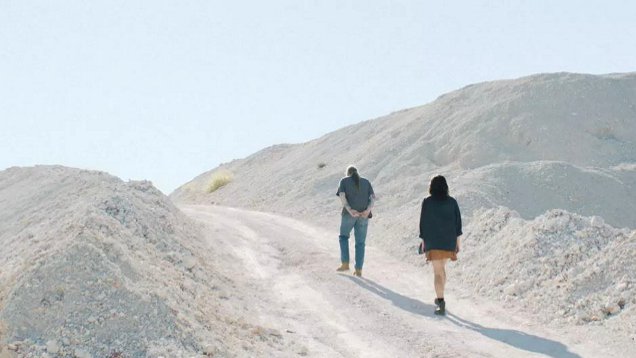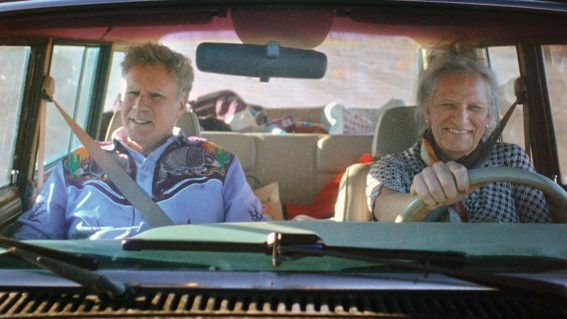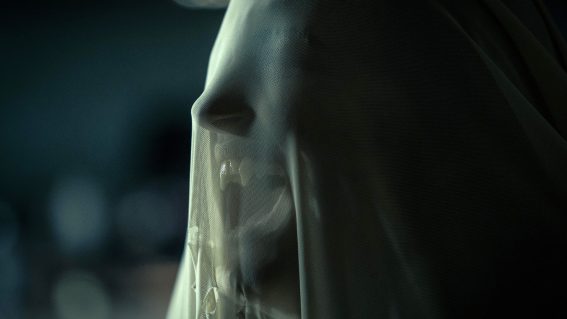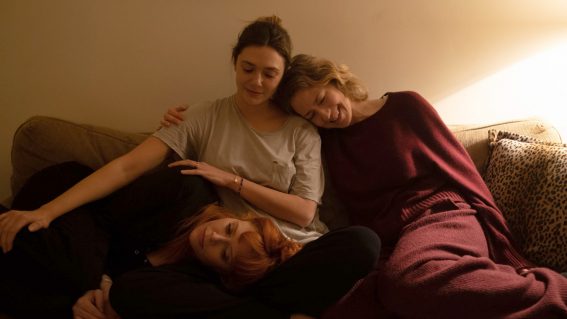The outback Australian drama Strange Colours contains rare wonders

On receiving news that her estranged father (Daniel P. Jones) is dying, Milena (Kate Cheel) decamps to the opal mining town of Lightning Ridge to see him for what she assumes is going to be the very last time. There she finds a ramshackle, hyper-masculine hamlet populated with hard drinking lost souls, back bush philosophers, dreamers and derelicts, all here ostensibly to scratch in the dirt for a big strike – but really here because, at the end of the day, they have nowhere else to go.
Drawing on and expanding her short documentary, Lightning Ridge: The Land of Black Opals, debut feature director Alena Lodkina and her co-screenwriter, Isaac Wall, eschew familiar narrative shapes and dramatic beats to instead present a slow-burn portrait of a strange community of choice. Beautifully shot by Michael Latham (Casting JonBenet), the film is by turns dreamlike and dirt-streaked, contrasting the hard grunt-work of mining (and drinking – a 10am tinny is not out of the ordinary here) with the strangely hypnotic, liminal bushland the town is surrounded by and the vast open sky.
Lodkina has filled out her cast with non-actors, and to best effect – there’s an authenticity to this ensemble of bearded, boozing, singlet-clad hardcases that even the deepest bench of NIDA graduates couldn’t fake. Part of it is the naturalistic, opaque dialogue; part of it is the almost universal lack of self-censorship; but mostly it’s down to the loneliness. These are people who have simply wound up in a place and stayed there, having no better option. Some pay lip service to chasing their fortune in opal mining, but for many the town is simply a place to be and drink and work and wait. More or less forgotten by the world, they swarm to Milena like moths to a light bulb, eager to have some kind of human connection, no matter how fleeting.
That’s the key dramatic thrust of Strange Colours, if it can be said to have one. Milena, accused at one point by her father of “Bouncing around the country like a tennis ball”, needs to figure out if she’s wound up in Lightning Ridge, too. For certain, as a young woman with some tertiary education under her belt, she stands apart from the town’s blokier-than-blokey rank and file, there are points of commonality there, too – a certain alienation, a certain existential despair masked by stoic good humour. While initially the central tension seems to be whether she’s in danger from these lonely, unrefined men who have been without feminine company for lord knows how long, the real question is whether he’s too much like them.
However, while there might be fire in the stone, to quote Storm Boy author Colin Thiele’s opal-mining novel, the inner life of Lodkina’s characters is much more difficult to parse. Whether that’s a feature or a bug is in the eye of the beholder; by going with naturalistic dialogue, closed off, opaque performances, and a rather flattened dramatic arc, Lodkina has created a wonderful observational film, but possibly at the expense of audience identification and engagement. Like its characters, Strange Colours expects you to come to it – it’s not hiding anything, but it’s also not giving up its secrets too easily. It’s obtuse, and demands close attention. If you can give it that, this is a film that contains rare wonders. However, anyone seeking a more conventional drama may be disappointed.

















